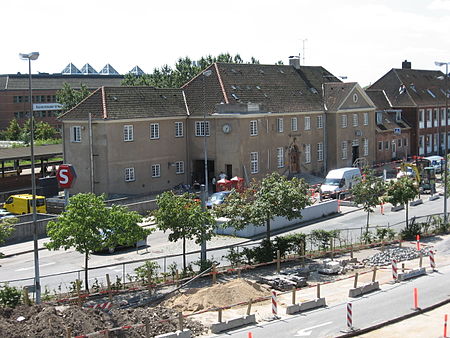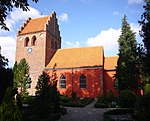Glostrup station

Glostrup station is a commuter rail railway station serving the railway town/suburb of Glostrup west of Copenhagen, Denmark. It is located on the Høje Taastrup radial of Copenhagen's S-train network. It is located close to the historical, administrative and commercial centre of Glostrup Municipality, but also serves Brøndbyvester in Brøndby Municipality, whose boundary comes within a few hundred metres from the station. In front of the station is a major bus terminal from which local and express buses go in many directions. The station is connected to the nearby Glostrup Shopping Center via an underground walkway, the same walkway which is used to access the platforms. Glostup is one of the few remaining stations in Copenhagen that is an active rail freight destination. Sidings to industries west, south, and east of the station emerge from a small freight yard south of the long-distance tracks.
Excerpt from the Wikipedia article Glostrup station (License: CC BY-SA 3.0, Authors, Images).Glostrup station
Banegårdspladsen, Glostrup Municipality
Geographical coordinates (GPS) Address Nearby Places Show on map
Geographical coordinates (GPS)
| Latitude | Longitude |
|---|---|
| N 55.662916666667 ° | E 12.397222222222 ° |
Address
Banegårdspladsen 11
2600 Glostrup Municipality
Capital Region of Denmark, Denmark
Open on Google Maps







